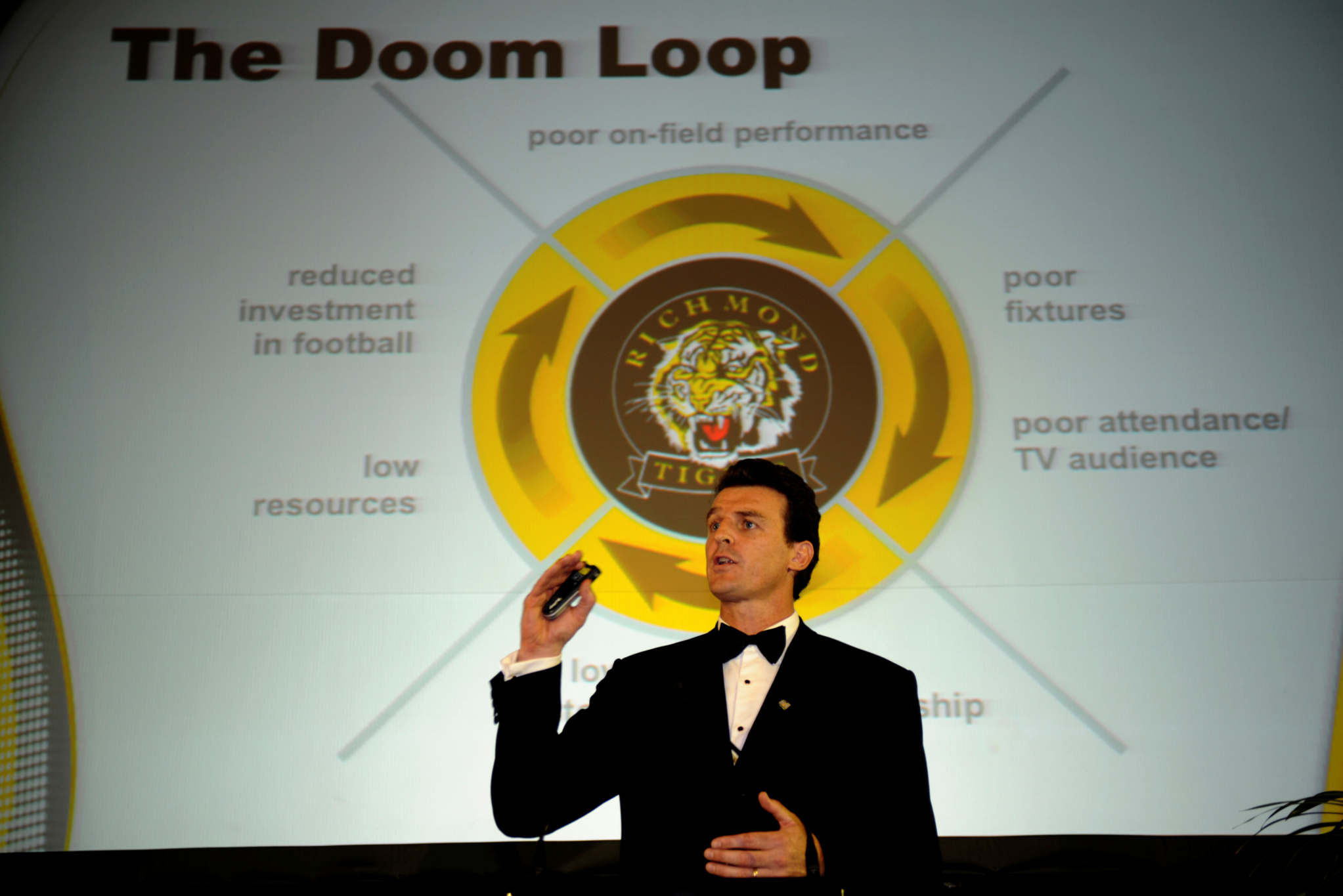How the AFL’s ‘power’ clubs have lost powerJake Niall
The Age
March 8, 2022 — 8.36pmWe still call the clubs with the most supporters and dollars “power clubs” but that term is becoming a misnomer in an AFL competition that has increasingly concentrated power at head office in Docklands.
Today, the clubs that have the biggest financial footprint on the game - Collingwood, West Coast, Richmond, Hawthorn, Essendon and Adelaide - have diminished capacity to resist the AFL’s socialised measures. Their competitive advantages, too, have been greatly reduced, as funding figures over the past decade underscore.
They no longer have the ability to out-spend the smaller clubs in football departments, thanks to the soft cap, which was frozen around $9.5 million for years on end (it was $9.7 million in 2019) and then slashed to $6.2 million during the first year of the pandemic.
Little more than a decade ago, there were clubs such as North Melbourne and the Bulldogs who didn’t spend 100 per cent of their salary cap on players; North, indeed, were often around the minimum of 92.5 per cent, and it is a testament to that club’s ingenuity and grit that the Roos were still so competitive.
Back in 2011 and 2012, spending on football had turned into an arms race that favoured the wealthy. Collingwood, West Coast, Geelong and Hawthorn were spending big and largely succeeding, Essendon were breaking into their vast piggy bank, having brought back the ill-fated Hird-Thompson dream team, as Carlton showed fleeting signs of revival under Brett Ratten.
Richmond, knowing how behind they’d fallen, had just launched “the Fighting Tiger Fund” with the joint aims of wiping off a sizeable debt and ensuring that the club’s skinny football department was fully resourced.
Today, these monster clubs not only can’t spend more than the smaller fish, they’re also contending with the reality that the fiscally challenged clubs will be funded to the point that they will have pretty much the same football budget.
 Brendon Gale makes his point about Richmond in 2011. CREDIT:ARCHIVES
Brendon Gale makes his point about Richmond in 2011. CREDIT:ARCHIVESThird-party deals to players are also heavily policed by the AFL, as they must be.
The gap has been closed, largely via the mechanism known as “variable funding”. As the funding figures from 2012-2021 show, without variable funding, the Giants and the Suns wouldn’t be viable, while the Saints, Dogs, North and Dees would be severely weakened.
Approximate 10-year totals (2012-21)Including 2021 estimates.
Team Amount ▼GWS $203,000,000
Gold Coast $198,000,000
Bris Lions $160,000,000
St Kilda $156,000,000
Western Bulldogs $139,000,000
North Melbourne $134,000,000
Melbourne $132,000,000
Port Adelaide $122,000,000
Sydney $117,000,000
Richmond $106,000,000
Carlton $105,000,000
Essendon $100,000,000
Adelaide $99,700,000
Fremantle $99,000,000
Hawthorn $96,500,000
Geelong $95,800,000
West Coast $93,500,000
Collingwood $93,300,000
At club level, there is more noise about the massive funding of St Kilda - nearly $17 million more the next Victorian club over the decade, despite a larger fan base than the Dogs or North - than the dollars pumped into GWS and the Suns. Having reduced their debt, the Saints should be preparing for a much less generous package.
Expansion has further concentrated power in the hands of head office. As Jeff Kennett has observed, the competition reached a tipping point a while back when the number of clubs that were financially reliant on the AFL out-numbered those who could fund themselves.
Northern teams, arguably excepting the Swans (though not during the pandemic), are highly reliant on extra AFL support, while the same has been true of the smaller Victorian clubs plus Port Adelaide. The Dogs and Demons could not have succeeded in winning flags without a socialised funding model, which also helped them create excellent balance sheets. The power clubs can only influence AFL policy if they band together and persuade middle powers – now Carlton, Geelong and maybe Fremantle – to join them, a tough ask.
This concentration of power in the hands of Gillon McLachlan’s administration and the AFL Commission has increased during the pandemic, when the game faced an emergency and had to respond as a collective.
On Wednesday, when McLachlan and the commission meet the presidents, it is likely there will be some mild agitation on the funding model, under which Richmond, Collingwood, West Coast and Hawthorn have lost $2 million each this year and Essendon and Adelaide will also lose.
Tasmania should also be a topic, although the tendency - at least before Peter Gutwein became premier - has been to kick the Tassie can down the road. For the clubs, the Tasmanian question will be whether the game can sustain a 19th team.
One would imagine that consent will be conditional upon the Tasmanian government providing the kind of subsidy that would make the Tassie team a mid-range-funded club, rather than one in the bottom third.
Consider what would have happened at the turn of the century, or even at the apogee of Eddie McGuire’s reign at Collingwood back in 2006-2012, had the league sought to cut something like $2 million from those power clubs.
The presidents’ meetings with the league would be tantamount to a cage match. Certainly, there would be very public dissent from the power clubs and some threatening missives.
That there won’t be much of that on Wednesday might be a measure of progress and of a kinder, fairer competition. Above all, it shows where the power now resides.
https://www.theage.com.au/sport/afl/how-the-afl-s-power-clubs-have-lost-power-20220305-p5a208.html